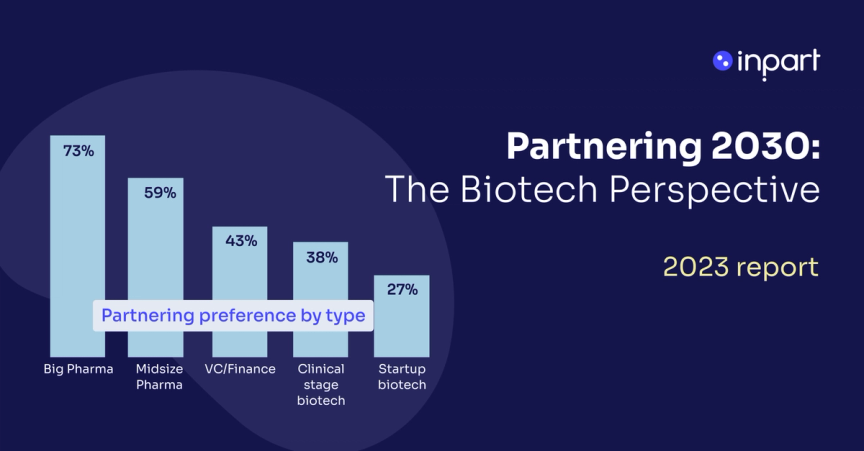Biotech companies are continuously devising groundbreaking solutions in their labs, but key to the development and commercialization of new therapies in the life sciences is external innovation. Biotechs with pioneering solutions to the most pressing healthcare challenges around the world are searching for partnerships with top pharma companies to deliver life-changing drugs to patients. The same goes for pharma companies with smaller in-house R&D operations.
In 2023, out-licensors were still struggling to get their foot in the door, while in-licensors found it difficult to cut through the noise and find the most suitable asset to deliver on their R&D requirements. Business development teams sometimes found themselves concentrating their efforts in the wrong places to pursue fruitless opportunities.
To help organizations gain insight into these challenges, our ‘Partnering 2030: The Biotech Perspective’ report explores the pain points experienced by biotech companies searching for new pharma partners from Europe, North America, and the Asia-Pacific region.
Key findings and trends
Almost three-quarters (73%) of biotech companies that responded prefer to partner with big pharma companies. This is the most favored type of partnership, ahead of mid-size pharma, venture capital, other biotechs, or finance firms. There’s also an increasing focus on these collaborations being sustainable and environmentally friendly, especially amongst North American companies and larger companies with over 200 employees.
The next prominent trend identifies how biotechs find new partners. 89% of out-licensors who responded attend partnering events and 81% rank them as their most successful method for meeting a potential partner. This is far ahead of the second-most popular route, company websites (30%). However, biotechs generally struggle to have their meeting requests accepted at conferences. 63% of those attending events are frustrated with the quantity and quality of the meetings they have. An additional 60% said that the communication ends abruptly after a meeting. Some of the other pain points highlighted by the respondents include travel expenses, the quantity and quality of relevant companies attending, difficulty getting in touch and finding stakeholders after a meeting, misaligned interests, quality of feedback, and mismatched connections.
These hurdles are putting a block on effective collaboration and innovation, holding back the development of potentially life-saving treatments. However, there is an appetite from biotech companies to make connections with partners around the world. International partnering conferences are far more popular (74%) than scientific conferences (53%) and regional conferences (32%).
Respondents ranked effective communication and transparency as the most important component of a successful collaboration. Long-term vision and strategy ranked second, with scientific impact and speed and efficiency equally third.
Such relationships don’t need to be built on in-person networking. It’s the organizations that bring in the right tools and mindset that are the most successful in partnering. Our online partnering platform, Connect, has already initiated over 15,000 new conversations between individuals across academia and industry. Curated by in-house STEM experts, the platform only allows access to those who have the capacity to action collaborations and partnerships, and our involvement is just to spark those early discussions.

Image credits: © [danai] / Adobe Stock.
